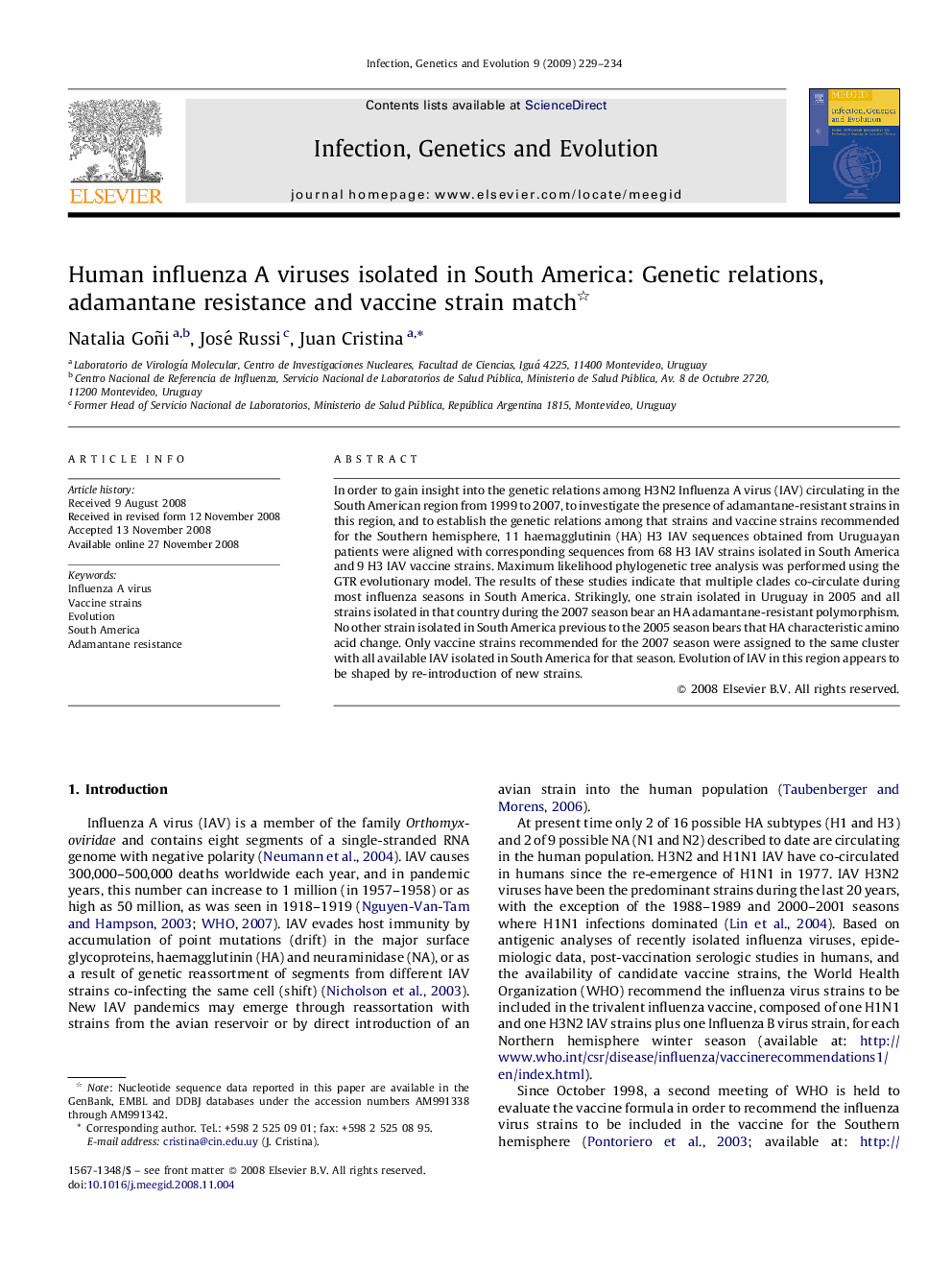| Article ID | Journal | Published Year | Pages | File Type |
|---|---|---|---|---|
| 5911956 | Infection, Genetics and Evolution | 2009 | 6 Pages |
Abstract
In order to gain insight into the genetic relations among H3N2 Influenza A virus (IAV) circulating in the South American region from 1999 to 2007, to investigate the presence of adamantane-resistant strains in this region, and to establish the genetic relations among that strains and vaccine strains recommended for the Southern hemisphere, 11 haemagglutinin (HA) H3 IAV sequences obtained from Uruguayan patients were aligned with corresponding sequences from 68 H3 IAV strains isolated in South America and 9 H3 IAV vaccine strains. Maximum likelihood phylogenetic tree analysis was performed using the GTR evolutionary model. The results of these studies indicate that multiple clades co-circulate during most influenza seasons in South America. Strikingly, one strain isolated in Uruguay in 2005 and all strains isolated in that country during the 2007 season bear an HA adamantane-resistant polymorphism. No other strain isolated in South America previous to the 2005 season bears that HA characteristic amino acid change. Only vaccine strains recommended for the 2007 season were assigned to the same cluster with all available IAV isolated in South America for that season. Evolution of IAV in this region appears to be shaped by re-introduction of new strains.
Related Topics
Life Sciences
Agricultural and Biological Sciences
Ecology, Evolution, Behavior and Systematics
Authors
Natalia Goñi, José Russi, Juan Cristina,
